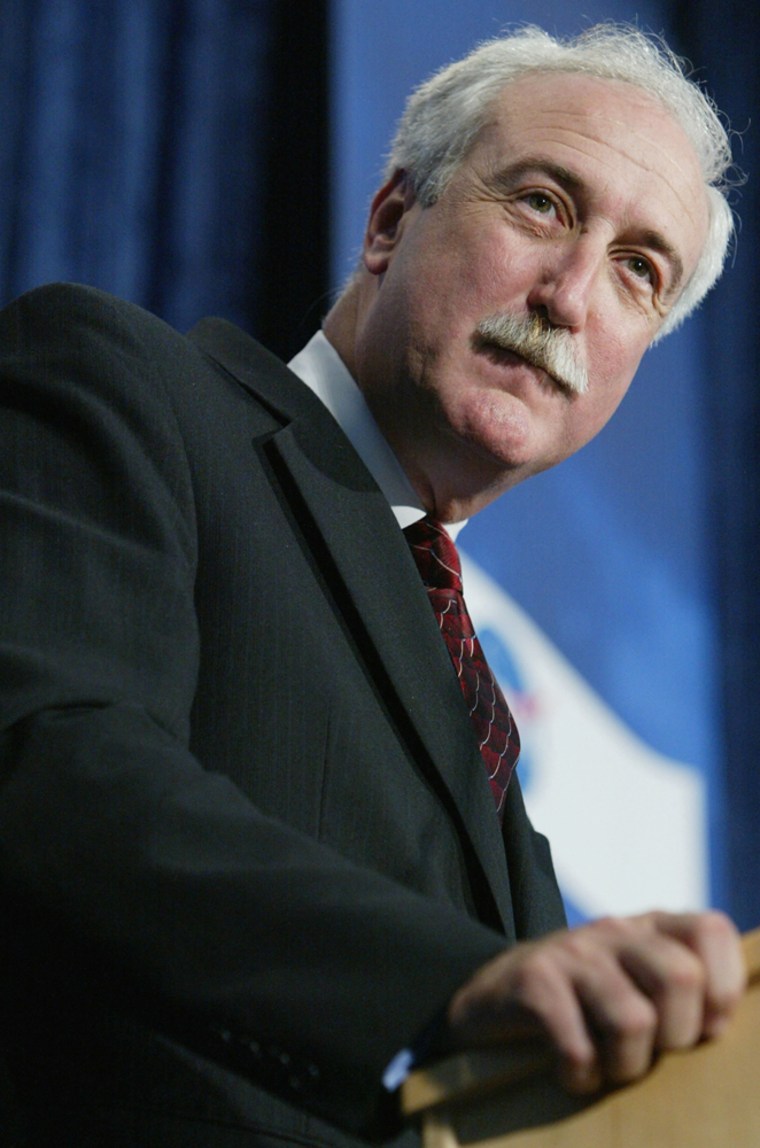NASA’s chief announced a “transformation” at the space agency on Thursday to make it leaner, more focused and better able to tap private industry for future exploration of the moon and possibly Mars.
NASA Administrator Sean O’Keefe said the change in management and organization should be apparent in six months, as the agency works to return the grounded shuttle fleet to flight and continues to fly the international space station.
“(This) should yield some very crisp, definable answers in terms of how we’re organized and what we do and how programs are managed and arrayed, certainly by the end of the year,” O’Keefe said at a briefing.
“This is a work in progress; it’s going to take time,” he said. “Any transformation is evolutionary. If it is revolutionary and convulsive, it usually doesn’t work.”
The changes announced by O’Keefe are meant to make communication clearer among various branches of the far-flung space agency, where 10 centers scattered across the United States have been criticized for failing to work together. Several "mission directorates" were created, including:
- Aeronautics research to study and develop aeronautical technologies for safe, reliable and efficient aviation systems.
- Science, to carry out the exploration of Earth, the moon, Mars and beyond; chart the best route of discovery; and continue Earth and space exploration. This combines research on the Earth and other planets.
- Exploration systems, to develop capabilities and supporting research and technology that enable sustained and affordable human and robotic exploration in space. It includes the biological and physical research necessary to ensure the health and safety of crew during long-duration space flight.
- Space operations, to direct space flight operations, space launches and space communications.
There will also be two agency-wide priorities under a Safety and Mission Assurance Office and an Education Office.
Responding to presidential panel
The transformation itself is in response to a White House panel’s recommendations for realizing President Bush’s goal of returning human explorers to the moon and possibly sending a human mission to Mars.
The panel said in its final report last week: “NASA’s relationship to the private sector, its organizational structure, business culture and management processes — all largely inherited from the Apollo era — must be decisively transformed to implement the new, multi-decadal space exploration vision.”
Among other recommendations, the panel said NASA should rely more on private industry for its space objectives.
Responding to SpaceShipOne
O’Keefe’s briefing came just four days after the first privately financed flight into space by SpaceShipOne, which reached an altitude of 62 miles (100 kilometers) in a voyage over the Mojave Desert in California on Monday.
When asked whether the reported $20 million mission reflected poorly on NASA’s costly spaceflights, O’Keefe noted that NASA has regulatory and oversight requirements that SpaceShipOne did not.
However, he added that the transformed agency would be able to call on the talents of private aeronautical professionals, such as SpaceShipOne designer Burt Rutan.
“We can create an environment to motivate the Burt Rutans and folks like them to continue to excel and do great things ... making what we have more freely available, more accessible and by being a friendlier environment to entrepreneurs,” O’Keefe said.
Responding to Columbia tragedy
In addition to streamlining NASA, O’Keefe also presides over the effort to return the shuttles to flight after last year's Columbia accident, in which seven astronauts died.
An independent panel investigating that accident found NASA had a “broken safety culture” that needed to be fixed before flights could resume. No shuttle flights are expected until March 2005.
